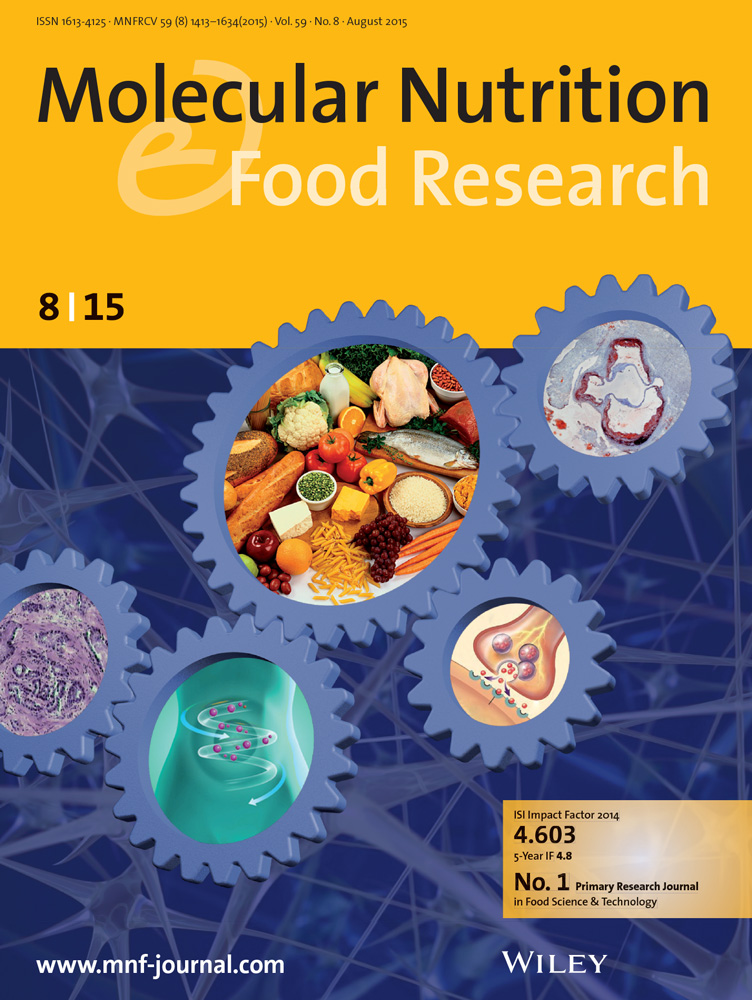吲哚-3-甲醇和色氨酸联合使用可增强小鼠对沙门氏菌结肠炎的先天免疫。
IF 4.2
2区 农林科学
Q1 FOOD SCIENCE & TECHNOLOGY
引用次数: 0
摘要
沙门氏菌仍然是一个重要的全球公共卫生问题,能够引起一系列疾病。已知芳烃受体(AhR)在沙门氏菌诱导的结肠炎中具有保护作用。虽然吲哚-3-甲醇(I3C)和色氨酸(Trp)是已知的AhR配体的膳食来源,但它们在沙门氏菌发病机制中的联合作用尚未得到充分表征。我们采用成熟的沙门氏菌结肠炎模型,用6-8周龄雌性C57BL/6小鼠来评估I3C和Trp的联合作用。小鼠在感染前连续7天灌胃I3C (100 mg/kg/d)、Trp (100 mg/kg/d)或同时灌胃I3C (100 mg/kg/d)。与单独治疗相比,I3C + Trp联合治疗可显著缓解结肠炎的临床症状,降低盲肠促炎细胞因子(IL-1β、IL-6、CXCL2、IL-17α) mRNA表达,增加免疫调节基因(IL-22、CRAMP、ATG16L1)表达。免疫组化染色显示盲肠黏膜zonulin和claudin-2表达减少,occludin、AhR和维生素D受体表达增加。I3C和Trp的结合通过调节宿主免疫反应和增强上皮屏障的完整性,对沙门氏菌诱导的结肠炎具有加性保护作用。这些结果表明,膳食AhR配体可能作为一种有希望的补充方法来预防和管理侵袭性沙门氏菌病。本文章由计算机程序翻译,如有差异,请以英文原文为准。
The Combination of Indole-3-Carbinol and Tryptophan Provides Additive Benefits in Enhancing Innate Immunity Against Salmonella Colitis in Mice.
Salmonella spp. remains a significant global public health concern, capable of causing a spectrum of diseases. The aryl hydrocarbon receptor (AhR) is known to confer protective effects in Salmonella-induced colitis. Although indole-3-carbinol (I3C) and tryptophan (Trp) are known dietary sources of AhR ligands, their combined effects on Salmonella pathogenesis have yet to be fully characterized. We employed a well-established Salmonella colitis model using 6-8-week-old female C57BL/6 mice to evaluate the combined effects of I3C and Trp. Mice were pretreated with oral gavage of I3C (100 mg/kg/day), Trp (100 mg/kg/day), or both for seven consecutive days before infection. The I3C + Trp combination significantly alleviated clinical signs of colitis, reduced cecal mRNA expression of proinflammatory cytokines (IL-1β, IL-6, CXCL2, IL-17α), and increased expression of immune-modulating genes (IL-22, CRAMP, ATG16L1) compared to individual treatments. Immunohistochemical staining revealed decreased zonulin and claudin-2, and increased occludin, AhR, and vitamin D receptor expression in the cecal mucosa. The combination of I3C and Trp exerts additive protective effects against Salmonella-induced colitis by modulating host immune responses and enhancing epithelial barrier integrity. These results suggest dietary AhR ligands may serve as a promising complementary approach for the prevention and management of invasive salmonellosis.
求助全文
通过发布文献求助,成功后即可免费获取论文全文。
去求助
来源期刊

Molecular Nutrition & Food Research
工程技术-食品科技
CiteScore
8.70
自引率
1.90%
发文量
250
审稿时长
1.7 months
期刊介绍:
Molecular Nutrition & Food Research is a primary research journal devoted to health, safety and all aspects of molecular nutrition such as nutritional biochemistry, nutrigenomics and metabolomics aiming to link the information arising from related disciplines:
Bioactivity: Nutritional and medical effects of food constituents including bioavailability and kinetics.
Immunology: Understanding the interactions of food and the immune system.
Microbiology: Food spoilage, food pathogens, chemical and physical approaches of fermented foods and novel microbial processes.
Chemistry: Isolation and analysis of bioactive food ingredients while considering environmental aspects.
 求助内容:
求助内容: 应助结果提醒方式:
应助结果提醒方式:


